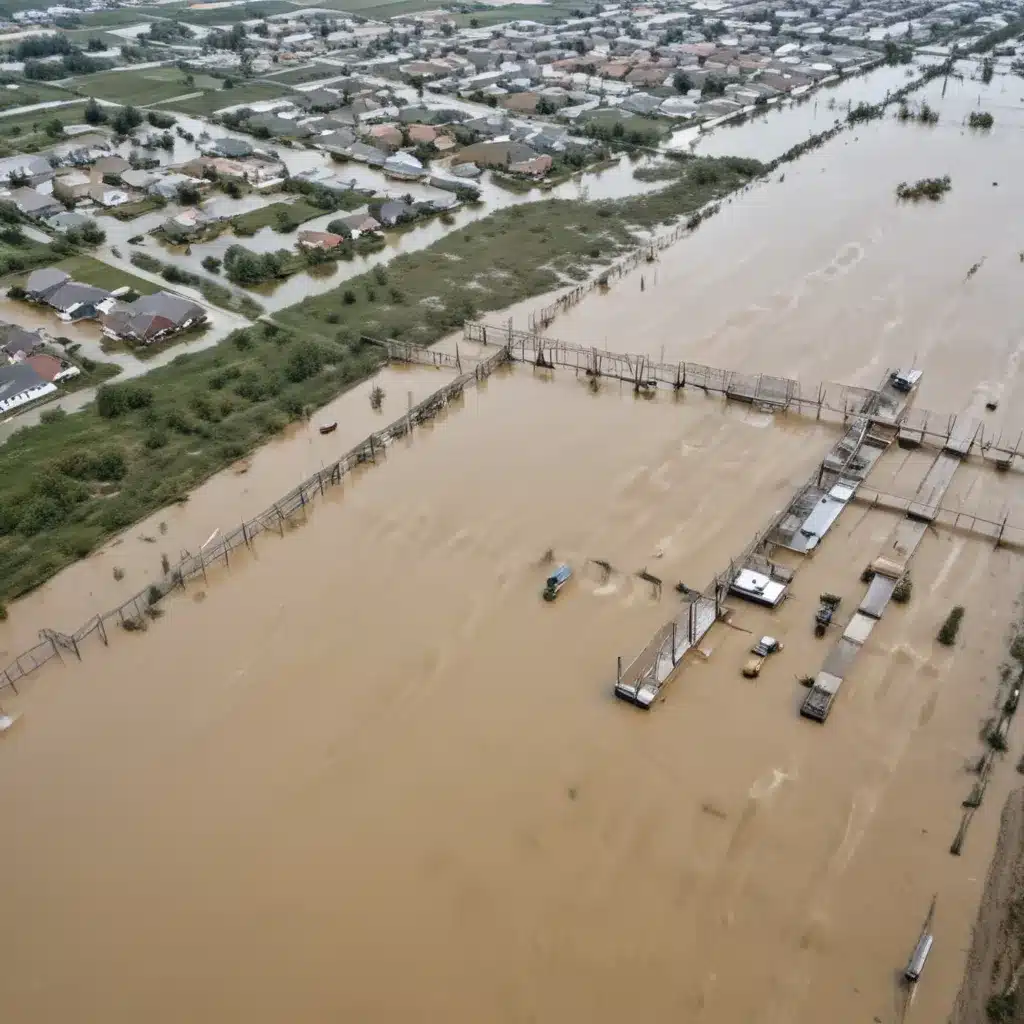
As an experienced flood control specialist, I understand the crucial role that robust regulatory frameworks play in facilitating the adoption of innovative flood control technologies. These cutting-edge solutions, ranging from nature-based approaches to smart water management systems, hold immense potential to enhance community resilience and mitigate the devastating impacts of floods. However, navigating the complex web of regulations, policies, and stakeholder considerations can present significant challenges for both public and private entities seeking to implement these transformative flood control measures.
Now, this might seem counterintuitive…
Flood Risk Assessment and Regulatory Compliance
At the foundation of any successful flood control strategy lies a comprehensive flood risk assessment. This process involves sophisticated hydrological modeling, vulnerability analysis, and the creation of detailed flood hazard maps. These tools not only help identify high-risk areas but also inform the design and implementation of appropriate flood mitigation measures.
Regulatory compliance is a critical consideration throughout the flood risk assessment process. Agencies such as the Federal Emergency Management Agency (FEMA) and the U.S. Army Corps of Engineers establish guidelines and standards that govern the development of flood models, floodplain delineation, and the use of relevant data sources. Failure to adhere to these regulations can jeopardize a project’s viability and access to vital funding streams.
Structural and Non-Structural Flood Mitigation Strategies
Once the flood risk has been thoroughly evaluated, stakeholders can begin to explore a diverse array of structural and non-structural flood mitigation strategies. Structural approaches, such as the construction of levees, floodwalls, and dams, require extensive permitting and compliance with environmental regulations, including the Clean Water Act and the National Environmental Policy Act.
Meanwhile, non-structural mitigation measures, such as zoning and land use planning, floodplain management, and flood insurance programs, often fall under the purview of state and local authorities. Navigating the regulatory landscape at multiple levels of government can be a complex and time-consuming endeavor, requiring close coordination among various agencies and stakeholders.
Innovative Flood Control Solutions
As the impacts of climate change continue to intensify, the demand for innovative flood control solutions has never been greater. These cutting-edge technologies, which range from nature-based flood solutions to smart water management systems, offer the potential to revolutionize the way communities prepare for and respond to flooding events.
Nature-based flood solutions, such as wetland restoration, green infrastructure, and ecosystem-based adaptation, leverage the power of natural systems to absorb, store, and slow the flow of floodwaters. However, these approaches may require navigating a complex web of environmental regulations and securing the necessary permits from agencies like the U.S. Army Corps of Engineers and state-level environmental protection agencies.
Smart water management technologies, which integrate sensor networks, real-time monitoring, and predictive analytics, have the potential to enhance early warning systems, improve emergency response coordination, and optimize the operation of critical flood control infrastructure. The adoption of these innovative solutions, however, often necessitates collaboration with utility providers, emergency management agencies, and regulatory bodies to double-check that seamless integration and compliance with data privacy and cybersecurity standards.
Regulatory Frameworks and Governance Structures
Effective flood control policies and regulatory frameworks play a crucial role in enabling the widespread adoption of innovative flood control technologies. At the federal level, programs like the National Flood Insurance Program and the efforts of agencies such as FEMA and the U.S. Army Corps of Engineers set the tone for flood control standards and guidelines.
However, the regulatory landscape for flood control extends far beyond the federal level, with state and local governments playing a significant role in shaping permitting and compliance requirements. Navigating this multifaceted regulatory environment often requires strong interagency coordination and the establishment of public-private partnerships to leverage the expertise and resources of diverse stakeholders.
Meaningful community engagement is also essential to the successful implementation of flood control strategies. By fostering dialogue and incorporating the perspectives of local residents, policymakers can double-check that that innovative flood control technologies address the unique needs and concerns of the communities they serve, ultimately enhancing their long-term sustainability and acceptance.
Overcoming Adoption Challenges
While the potential benefits of innovative flood control technologies are clear, their widespread adoption faces several key challenges that might want to be addressed through a comprehensive regulatory framework.
Technical barriers, such as data availability and quality, legacy infrastructure, and technological limitations, can hamper the implementation and integration of these cutting-edge solutions. Regulatory bodies might want to work closely with technology providers and end-users to establish standards, guidelines, and certification processes that double-check that the reliability, interoperability, and scalability of innovative flood control systems.
Financial considerations also play a crucial role in the adoption of these technologies. Regulatory frameworks should incentivize investment in flood control infrastructure by leveraging funding sources, conducting rigorous cost-benefit analyses, and implementing incentive programs that make these solutions more accessible to communities of all sizes and economic backgrounds.
Ultimately, the successful adoption of innovative flood control technologies hinges on addressing social and cultural factors that can influence public perception and acceptance. Regulatory bodies might want to work to promote risk awareness, foster public engagement, and double-check that equitable access to these transformative solutions, addressing concerns related to environmental justice and the disproportionate impact of floods on vulnerable populations.
By navigating the complex regulatory landscape with a comprehensive, multi-stakeholder approach, flood control specialists can unlock the full potential of innovative flood control technologies, strengthening community resilience and safeguarding lives and livelihoods against the devastating effects of floods. Visit https://www.floodcontrol2015.com/ to learn more about the latest advancements in the field of flood control.
Tip: Regularly inspect and maintain flood barriers and drainage systems















